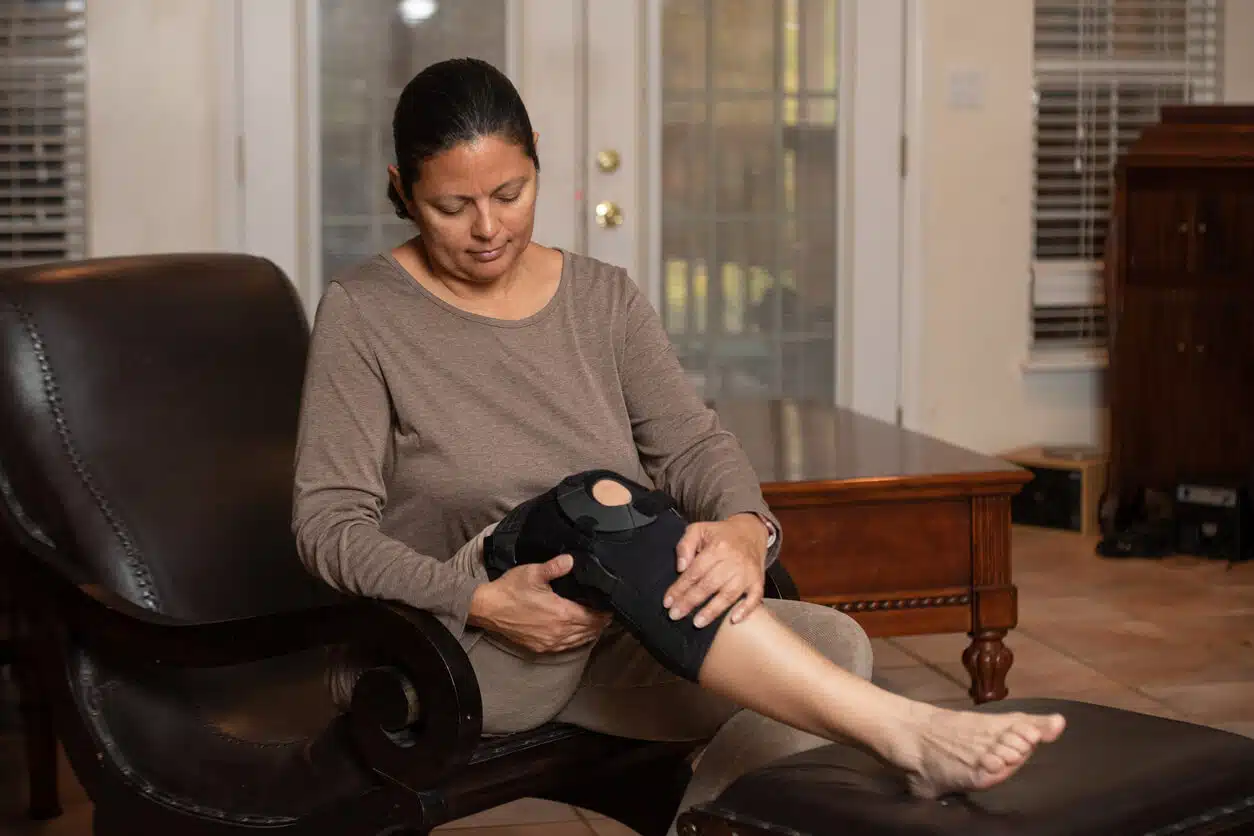
Knee surgery can take you one step closer to less pain and better mobility. However, the journey to full recovery is only beginning after leaving the operating room. A most important part of the healing process after knee surgery is rehabilitation, and it is necessary for restoring knee strength and flexibility.
In this article, we will guide you through a recovery roadmap after knee surgery and give useful tips on how to navigate the rehabilitation process.
Recovery Roadmap After Knee Surgery
A recovery roadmap for knee surgery is a structured plan that outlines the recommended steps and timeline for rehabilitation after undergoing knee surgery. The specific details may vary depending on the type of knee surgery performed and individual factors.
Here are some general aspects that may be included in a recovery roadmap:
Early Post-Surgery Phase (Immediate Days Post-Surgery)
- Pain management – Medication and other techniques to manage postoperative pain.
- Swelling reduction – Utilizing ice, elevation, and compression to minimize swelling.
- Gentle range of motion exercises – Gradually introducing controlled movements to prevent stiffness and promote circulation.
Physical Therapy (Begins A Few Weeks Post-Surgery)
- Evaluation – An assessment by a physical therapist to determine the patient’s current condition and develop a personalized rehabilitation plan.
- Strengthening exercises – Gradually increasing the intensity of exercises to rebuild muscle strength around the knee.
- Range of motion exercises – Activities aimed at improving flexibility and restoring full joint movement.
- Balance and stability training – Exercises to enhance overall stability and prevent falls.
- Functional exercises – Simulating daily activities and sports-specific movements to restore functional abilities.
Gradual Return to Activities
As the patient progresses, they may gradually reintroduce activities such as walking, running, and sports under the guidance of their orthopedic care team. The pace of return to activities will depend on individual progress and the advice of the surgeon and physical therapist.
Continued Maintenance and Monitoring
Even after completing the formal rehabilitation program, patients may be advised to continue certain exercises or activities to maintain the strength and function of the knee. Regular monitoring and follow-up appointments with the surgeon and physical therapist may be recommended to ensure long-term success.
How To Optimize Rehabilitation After Knee Surgery
To optimize rehabilitation after knee surgery, you can consider the following strategies:
1. Follow your rehabilitation plan.
Consistently adhere to the exercises, activities, and recommendations provided by your healthcare team, including your surgeon and physical therapist.
2. Elevate your leg.
Keep your leg elevated as much as possible, using pillows or a wedge under your heel (not underneath your knee). This helps reduce swelling and promote blood circulation.
3. Get quality sleep.
Ensure you’re getting enough restful sleep each night, as proper sleep enhances the healing process.
4. Maintain a balanced diet.
Eat a nutritious, well-rounded diet with an emphasis on foods that support healing and provide essential nutrients for tissue repair. Ask your doctor for a referral to a registered dietitian if necessary.
5. Stay hydrated.
Drink an adequate amount of water throughout the day to promote overall health and facilitate recovery.
6. Manage pain effectively.
Take pain medications as prescribed by your doctor and follow their instructions for pain management. Additionally, utilize ice therapy and compression techniques as recommended.
7. Keep a positive mindset.
Knee surgery patients who stay positive and committed to their recovery usually recover faster. Engage in stress-reducing activities, which can help manage stress levels and keep you focused on your rehabilitation.
8. Listen to your body.
Pay attention to any discomfort, which could be a sign of overexertion during your rehabilitation. It’s important to strike a balance between pushing yourself to improve and allowing your body to rest and recover.
9. Communicate with your healthcare team.
Stay in regular contact with your orthopedic surgeon and physical therapist, updating them on your progress and discussing any concerns or questions you may have.
Knee Surgery in North Dakota
The orthopedic surgeons at The Bone & Joint Center are board-certified and fellowship trained, with a compassionate and patient-centric approach to treatment.
We understand how problems with the knee can be limiting, which is why we provide our patients with advanced solutions. Our knee surgeons can perform arthroscopy and joint replacement procedures and are experienced in the treatment of injuries and arthritis. Most patients who undergo knee surgery need some form of physical therapy, and we have highly skilled physical therapists for our patients.
To schedule an appointment with a top orthopedic knee surgeon in North Dakota, call our office today at (701) 946-7400 / (866) 900-8650 or use our online request form. We look forward to serving you.

